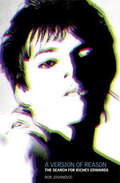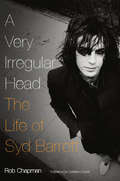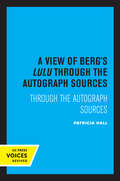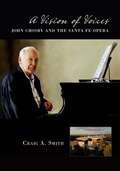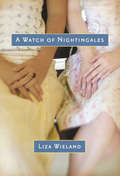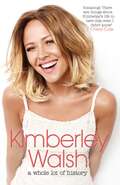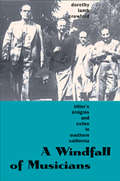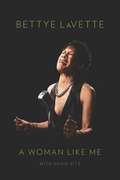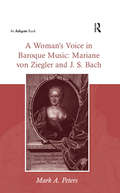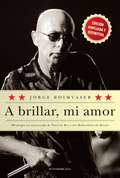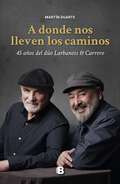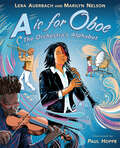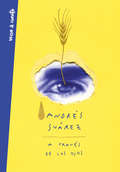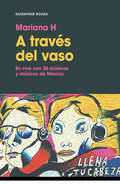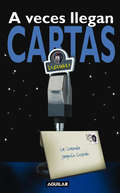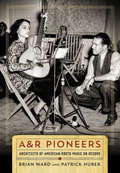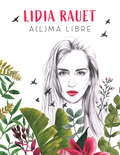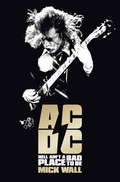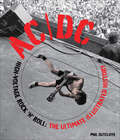- Table View
- List View
A Version of Reason: The Search for Richey Edwards
by Rob JovanovicThe missing Manic - an authoritative look into the life and times of Richey Edwards, the Manic Street Preachers' guitarist who disappeared in 1995.The disappearance of Richey Edwards, troubled guitarist with the Manic Street Preachers, is one of rock and roll's great unresolved mysteries. His Vauxhall Cavalier was found abandoned in a service station car park near the Severn Bridge, a notorious suicide spot, in February 1995, a fortnight after Edwards had last been seen. The location of the car and the tape left in the deck - Nirvana's album In Utero - tended to point to one conclusion. However, it almost seemed too obvious a statement, and in A VERSION OF REASON, Rob Jovanovic unravels the complicated life and final days of Richey Edwards. Piecing together testimony from those close to Edwards Jovanovic seeks to produce an authoritative account of the life and times of Richey Edwards.
A Very Irregular Head: The Life of Syd Barrett
by Rob ChapmanSyd Barrett was the lead guitarist, vocalist, and principle songwriter in the original line up of Pink Floyd. During his brief time with the band (1966-68) he was the driving force behind the unit. After he left the band he made just two further solo albums which were both released in 1970, before withdrawing from public view to lead a quiet, and occasionally troubled life in Cambridge, the town of his birth. Rob Chapman's book will be the first authoritative and exhaustively researched biography of Syd Barrett that fully celebrates his life and legacy as a musician, lyricist and artist, and which highlights the influence that he continues to have over contemporary bands and music fans alike.
A View of Berg's Lulu: Through the Autograph Sources
by Patricia HallAfter 50 years of analysis we are only beginning to understand the quality and complexity of Alban Berg's most important twelve-tone work, the opera Lulu. Patricia Hall's new book represents a primary contribution to that understanding—the first detailed analysis of the sketches for the opera as well as other related autograph material and previously inaccessible correspondence to Berg. In 1959, Berg's widow deposited the first of Berg's autograph manuscripts in the Austrian National Library. The complete collection of autographs for Lulu was made accessible to scholars in 1981, and a promising new phase in Lulu scholarship unfolded. Hall begins her study by examining the format and chronology of the sketches, and she demonstrates their unique potential to clarify aspects of Berg's compositional language. In each chapter Hall uses Berg's sketches to resolve a significant problem or controversy that has emerged in the study of Lulu. For example, Hall discusses the dramatic symbolism behind Berg's use of multiple roles and how these roles contribute to the large-scale structure of the opera. She also revises the commonly held view that Berg frequently invoked a free twelve-tone style. Hall's innovative work suggests important techniques for understanding not only the sketches and manuscripts of Berg but also those of other twentieth-century composers. This title is part of UC Press's Voices Revived program, which commemorates University of California Press’s mission to seek out and cultivate the brightest minds and give them voice, reach, and impact. Drawing on a backlist dating to 1893, Voices Revived makes high-quality, peer-reviewed scholarship accessible once again using print-on-demand technology. This title was originally published in 1996.
A Vision of Voices: John Crosby and the Santa Fe Opera
by Craig A. SmithA destination for thousands of opera lovers every year and the anchor of Santa Fe&’s thriving arts scene, the Santa Fe Opera owes its existence to the vision and hard work of one man: John O&’Hea Crosby (1926–2002), who created the company when he was only thirty years old and guided its fortunes for the next forty-five years. This book, the first in-depth exploration of Crosby&’s career, shows how the Opera reflected his passions for music and the arts.A Vision of Voices depicts the many sides of Crosby—a dreamer and tough-minded businessman, an artistic explorer and conservative programmer, and a competent conductor and sharp critic. His devotion to quality and his obsessive oversight bore an enduring harvest that forever changed Santa Fe, the state of New Mexico, and the operatic world.
A Watch of Nightingales
by Liza WielandA modest, quiet woman, Mara Raynor never dreamed she'd one day find herself in charge of the small private school in Washington, D. C. , where for many years she taught music and choir. But after the unexpected death of her husband, the school's headmaster, Mara finds herself thrust into the public eye, burdened not just with the responsibilities of acting headmaster---a role she never wanted---but also with a potentially explosive political and religious controversy that tests parents' and school administrators' spirit of tolerance. When a Sikh student is caught wearing a ceremonial knife on school grounds, fear spreads among parents and the school board. Coming at the same moment as the disappearance of Mara's teenage daughter, the controversy quickly assumes a far more personal nature. Not just any student, the Sikh boy is both the son of a woman with whom Mara shares a complicated past and---as Mara soon discovers---her own daughter's boyfriend. As it moves back and forth in time between the school in contemporary Washington and a girls' boarding school in the British countryside in 1977, A Watch of Nightingales weaves a rich and textured exploration of fear and remorse, the mysteries of love, and the complicated tensions that ring down the generations from parent to child.
A Wayfaring Stranger: Ernst von Dohnányi's American Years, 1949-1960 (California Studies in 20th-Century Music #25)
by Veronika KuszOn March 10, 1948, world-renowned composer and pianist Ernst von Dohnányi (1877−1960) embarked for the United States, leaving Europe for good. Only a few years earlier, the seventy-year-old Hungarian had been a triumphant, internationally admired musician and leading figure in Hungarian musical life. Fleeing a political smear campaign that sought to implicate him in intellectual collaboration with fascism, he reached American shores without a job or a home. A Wayfaring Stranger presents the final period in Dohnányi’s exceptional career and uses a range of previously unavailable material to reexamine commonly held beliefs about the musician and his unique oeuvre. Offering insights into his life as a teacher, pianist, and composer, the book also considers the difficulties of émigré life, the political charges made against him, and the compositional and aesthetic dilemmas faced by a conservative artist. To this rich biographical account, Veronika Kusz adds an in-depth examination of Dohnányi’s late works—in most cases the first analyses to appear in musicological literature. This corrective history provides never-before-seen photographs of the musician’s life in the United States and skillfully illustrates Dohnányi’s impact on European and American music and the culture of the time.
A Whole Lot of History
by Kimberley WalshIn 2002 - along with Cheryl Cole, Nadine Coyle, Sarah Harding and Nicola Roberts - Kimberley Walsh won a place in the Popstars The Rivals band Girls Aloud, and her life changed forever. Ten years later, after six platinum albums, twenty top-ten singles, a Brit Award, an entry in the Guinness Book of Records and a triumphant sell-out reunion tour, the girls have decided to go their separate ways. What better time for Kimberley - a professional, hardworking businesswoman as well as a multi-talented actress and songstress - to tell her story. What was it like behind the scenes of a such a hugely successful band? Was there any truth in the rumours of endless feuds within Girls Aloud? How did she manage to maintain such a strong loving relationship with her partner Justin during the 10 years she was in the band? And how does it feel when your best friend becomes the most famous person in the land? Full of the warmth and laughter that makes Kimberley such a national treasure, with lots of insider secrets revealed too, this book is like curling up on the sofa for a gossip with a friend. There is lots still to come from the UK's favourite Northern lass. Just watch this space.
A Whole Lot of History
by Kimberley WalshIn 2002 - along with Cheryl Cole, Nadine Coyle, Sarah Harding and Nicola Roberts - Kimberley Walsh won a place in the Popstars The Rivals band Girls Aloud, and her life changed forever.Ten years later, after six platinum albums, twenty top-ten singles, a Brit Award, an entry in the Guinness Book of Records and a triumphant sell-out reunion tour, the girls have decided to go their separate ways. What better time for Kimberley - a professional, hardworking businesswoman as well as a multi-talented actress and songstress - to tell her story. What was it like behind the scenes of a such a hugely successful band? Was there any truth in the rumours of endless feuds within Girls Aloud? How did she manage to maintain such a strong loving relationship with her partner Justin during the 10 years she was in the band? And how does it feel when your best friend becomes the most famous person in the land? Full of the warmth and laughter that makes Kimberley such a national treasure, with lots of insider secrets revealed too, this book is like curling up on the sofa for a gossip with a friend. There is lots still to come from the UK's favourite Northern lass. Just watch this space.(P)2013 Headline Digital
A Windfall of Musicians
by Dorothy Lamb CrawfordThis book is the first to examine the brilliant gathering of composers, conductors, and other musicians who fled Nazi Germany and arrived in the Los Angeles area. Musicologist Dorothy Lamb Crawford looks closely at the lives, creative work, and influence of sixteen performers, fourteen composers, and one opera stage director, who joined this immense migration beginning in the 1930s. Some in this group were famous when they fled Europe, others would gain recognition in the young musical culture of Los Angeles, and still others struggled to establish themselves in an environment often resistant to musical innovation. Emphasizing individual voices, Crawford presents short portraits of Igor Stravinsky, Arnold Schoenberg, and the other musicians while also considering their influence as a group--in the film industry, in music institutions in and around Los Angeles, and as teachers who trained the next generation. The book reveals a uniquely vibrant era when Southern California became a hub of unprecedented musical talent.
A Woman Like Me
by David Ritz Bettye LavetteNow in paperback, "an un-inching and uncompromising look at a life lived across the tracks from fame . . " (Detroit Free Press) As a teenager in Detroit, Bettye LaVette scored a hit single with "My Man--He's a Lovin' Man." But by twenty, she had faded into obscurity, and bad luck repeatedly sabotaged her career. Then, after forty years of singing in clubs, her unforgettable performances at the 2008 Kennedy Center Honors and at President Obama's preinaugural concert put her back in the spotlight. A chronicle of LaVette's incredible life, A Woman Like Me is a poignant, brazen, take-no-prisoners memoir as thrilling and fearless as her music.
A Woman's Voice in Baroque Music: Mariane von Ziegler and J.S. Bach
by MarkA. PetersAt the end of his second year in Leipzig, J.S. Bach composed nine sacred cantatas to texts by Leipzig poet Mariane von Ziegler (1695-1760). Despite the fact that these cantatas are Bach's only compositions to texts by a female poet, the works have been largely ignored in the Bach literature. Ziegler was Germany's first female poet laureate, and the book highlights her significance in early eighteenth-century Germany and her commitment to advancing women's rights of self-expression. Peters enriches and enlivens the account with extracts from Ziegler's four published volumes of poetry and prose, and analyses her approach to cantata text composition by arguing that her distinctive conception of the cantata as a genre encouraged Bach's creative musical realizations. In considering Bach's settings of Ziegler's texts, Peters argues that Bach was here pursuing a number of compositional procedures not common in his other sacred cantatas, including experimentation with the order of movements within a cantata, with formal considerations in arias and recitatives, and with the use of instruments, as well as innovative approaches to Vox Christi texts and to texts dealing with speech and silence. A Woman's Voice in Baroque Music is the first book to deal in depth with issues of women in music in relation to Bach, and one of the few comprehensive studies of a specific repertory of Bach's sacred cantatas. It therefore provides a significant new perspective on both Ziegler as poet and cantata librettist and Bach as cantata composer.
A Year at the Met
by Patrick J. SmithA study of the Metropolitan Opera presents a behind-the-scenes look at its public, private, artistic, financial, and organizational operations and discusses the traditions, achievements, and innovations of the opera company.
A brillar, mi amor: Mitología no autorizada de Patricio Rey y sus Redonditos de Ricota
by Jorge BoimvaserLa historia de la banda y de los músicos de Patricio Rey y susredonditos de ricota contada por un especialista y fanático en unaedición ampliada. «El sueño del hombre es un mito individual. El mito es un sueñocolectivo». Joseph CampbellSin publicidad, solo con el recurso del boca a boca, las nuevas camadasde seguidores ya comienzan desde niños a escuchar a los Redondos y aadoptar las frases de los temas como dogmas. Chicos que escucharon desdeel vientre materno a Los Redondos hoy piden ir con sus padres a lasmisas paganas del Indio Solari y Skay. «A brillar, mi amor» se hatransformado en un libro de culto. Boimvaser es uno de los más antiguosseguidores del grupo, conoce el fenómeno ricotero porque es parte de él.Esta es una nueva edición ampliada, donde el autor rescata lareligiosidad del fuego sagrado (el que nunca se apaga) y tamiza elrelato jugando con una suerte de psicoanálisis mitológico aplicado areflejar la historia de la banda y de sus solistas.
A donde nos lleven los caminos: 45 años del dúo Larbanois & Carrero
by Martín DuarteUna biografía exhaustiva que recorre los 45 años del dúo. Cuando Eduardo Larbanois vio por primera vez a Mario Carrero desconfió de él. Por su apariencia —llevaba un traje color habano, bigotes cortos y el pelo engominado— pensó que se trataba de un tira, un agente encubierto de la dictadura. Fue en un festival de folclore en Paysandú, en 1973. Después, los entretelones del espectáculo y el regreso en ómnibus a Montevideo, en el que, por casualidad, compartieron asiento, permitieron que los músicos conversaran en profundidad, reconocieran en el otro la misma sensibilidad artística, social, política, y entablaran una amistad que los impulsó a construir un camino musical juntos. Ese encuentro imprevisto es el primero de muchos hitos en la historia del dúo Larbanois & Carrero, emblema de la música popular uruguaya. En este libro, el periodista y músico Martín Duarte presenta una biografía exhaustiva que recorre los 45 años del dúo, desde la formación oficial en 1977 hasta la actualidad. El recorrido retrata episodios fundamentales de las infancias de Carrero y Larbanois, sus inicios artísticos, sus primeros recitales, sus peripecias en giras nacionales e internacionales, sus militancias políticas y sus intercambios con otros artistas como Alfredo Zitarrosa, Washington Benavides, Rubén Lena, Vera Sienra, Pepe Guerra, León Gieco y Emiliano Brancciari, entre tantos otros que dejaron huella en el repertorio del dúo.
A is for Oboe: The Orchestra's Alphabet
by Marilyn Nelson Lera AuerbachThis deeply imaginative and entertaining poetry collection details the pleasures of the orchestra, from strong-willed A to satisfied Z.Two widely acclaimed poets--one a composer and classical pianist as well--have come together to create this extraordinary portrait of the orchestra in all of its richness and fascination, using the structure of the alphabet in a way that's entirely new and delightful. A is for the first note you hear as you take your seat in the concert hall, played by the headstrong oboe. B is for the bassoon, "the orchestra's jester, complaining impatiently through his nose." And C is for the conductor, "like the captain on the bridge of a great ship, navigating the composer's musical charts." Onward the text goes, soaring in reverie and making thought-provoking observations while not taking itself too seriously--illuminating all the various details that flow together to create the nourishing experience of playing or listening to music.
A través de los ojos
by Andrés SuárezEl lado más íntimo de uno de los cantautores del momento: un homenaje a la vida a través de los ojos de todas las personas y lugares que lo rodean. Andrés Suárez vuelve con un libro de relatos que desgranan su lado más intimista y poético, para revolucionar el mundo que ha creado con sus letras musicales. Tras el éxito de Más allá de mis canciones, regresa con esta compilación de cápsulas que tocan el corazón, contadas bajo el prisma de diversas miradas: la de un niño, la de una camarera, la de un gran amigo que ya no está o la de los fuegos artificiales de Cedeira. A través de los ojos es un canto a la amistad, a la solidaridad, a la infancia y a la inocencia: un viaje al pasado en homenaje a los días vividos.
A través del vaso: En vivo con 26 músicas y músicos de México
by Mariana H26 entrevistas con algunos de los protagonistas del rock y la música popular en nuestro país. Este libro contiene rock, hip hop, pop, son huasteco, metal, música experimental, un par de boleros y una polca. Contiene 26 voces en vivo de los y las protagonistas de la escena musical mexicana, de las autoras y autores de algunos de los himnos de nuestras patrias emocionales. Amandititita, Abulón, Lino Nava, Fernando Rivera Calderón, Cecilia Toussaint, Dr. Shenka, Ely Guerra, José Manuel Aguilera, Jay de la Cueva, Denise Gutiérrez, Paco Huidobro, Jaime López, Tammy Tamerlane, Tito Fuentes, Clemente Castillo, Pato Machete, Natalia Lafourcade, Joselo Rangel, Jessy Bulbo, Daniel Gutiérrez, Chema Arreola, Pepe Mogt, Silverio, Sergio Arau, Sabo Romo, Ximena Sariñana.
A veces llegan cartas: La Gramola
by Joaquín Guzmán¿Quién, alguna vez en la vida, no ha depositado en una canción sueños, alegrías, tristezas? ¿Quién no se ha dejado llevar por la melancolía al escuchar una letra o ha hecho de unos compases el símbolo de su existencia? La música nos conecta con lo más profundo de nosotros mismos, y eso lo sabe bien Joaquín Guzmán, quien, al frente de La Gramola desde hace más de seis años, ha establecido un duradero lazo de amistad y confidencias con sus miles de oyentes. Este libro recoge algunas de las miles de cartas que a lo largo de los años han llegado a La Gramola. Algunas son estremecedoras, y nos muestran que un programa de radio puede ser un asidero a la vida; otras están marcadas por el sentido del humor, narran pequeñas historias personales... Todas son sinceras, emotivas, y nos descubren un universo íntimo y humano. A veces llegan cartas es un homenaje a todas esas personas que unavez se atrevieron a escribir de sí mismos.
A&R Pioneers: Architects of American Roots Music on Record (Co-published with the Country Music Foundation Press)
by Brian Ward Patrick HuberA&R Pioneers offers the first comprehensive account of the diverse group of men and women who pioneered artists-and-repertoire (A&R) work in the early US recording industry. In the process, they helped create much of what we now think of as American roots music. Resourceful, innovative, and, at times, shockingly unscrupulous, they scouted and signed many of the singers and musicians who came to define American roots music between the two world wars. They also shaped the repertoires and musical styles of their discoveries, supervised recording sessions, and then devised marketing campaigns to sell the resulting records. By World War II, they had helped redefine the canons of American popular music and established the basic structure and practices of the modern recording industry. Moreover, though their musical interests, talents, and sensibilities varied enormously, these A&R pioneers created the template for the job that would subsequently become known as "record producer."Without Ralph Peer, Art Satherley, Frank Walker, Polk C. Brockman, Eli Oberstein, Don Law, Lester Melrose, J. Mayo Williams, John Hammond, Helen Oakley Dance, and a whole army of lesser known but often hugely influential A&R representatives, the music of Bessie Smith and Bob Wills, of the Carter Family and Count Basie, of Robert Johnson and Jimmie Rodgers may never have found its way onto commercial records and into the heart of America's musical heritage. This is their story.
A&R Pioneers: Architects of American Roots Music on Record (Co-published with the Country Music Foundation Press)
by Brian Ward Patrick HuberAssociation for Recorded Sound Collections Certificate of Merit for the Best Historical Research in Recorded Roots or World Music, 2019A&R Pioneers offers the first comprehensive account of the diverse group of men and women who pioneered artists-and-repertoire (A&R) work in the early US recording industry. In the process, they helped create much of what we now think of as American roots music. Resourceful, innovative, and, at times, shockingly unscrupulous, they scouted and signed many of the singers and musicians who came to define American roots music between the two world wars. They also shaped the repertoires and musical styles of their discoveries, supervised recording sessions, and then devised marketing campaigns to sell the resulting records. By World War II, they had helped redefine the canons of American popular music and established the basic structure and practices of the modern recording industry. Moreover, though their musical interests, talents, and sensibilities varied enormously, these A&R pioneers created the template for the job that would subsequently become known as "record producer." Without Ralph Peer, Art Satherley, Frank Walker, Polk C. Brockman, Eli Oberstein, Don Law, Lester Melrose, J. Mayo Williams, John Hammond, Helen Oakley Dance, and a whole army of lesser known but often hugely influential A&R representatives, the music of Bessie Smith and Bob Wills, of the Carter Family and Count Basie, of Robert Johnson and Jimmie Rodgers may never have found its way onto commercial records and into the heart of America's musical heritage. This is their story.
A(l)ma libre
by Lidia RauetA(l)ma libre es el primer instapoemario de Lidia Rauet. Un libro de reflexiones y poemas a través de los cuales podrás conocer mejor el mundo de Lidia. Fui tan frágil como un cristal a punto de estallar.Aprendí a estar sola, y eso me hizo no volver a estarlo nunca más.Descubrí en mi misma el impulso que nos da alas para volar. Amarme a mí misma fue el principio de esta historia.Estás a punto de conocer mis miedos, mis barreras, mis logros.Estás a punto de descubrir mi verdad.
AC/DC: Hell Ain't a Bad Place to Be
by Mick WallMick Wall penetrates the closed world of Aussie rock legends AC/DC.AC/DC moved to Britain from Sydney in 1975, and soon set up a residency at London's Marquee Club. Their short hair (including the odd mullet), loud rock and attitude chimed well with the lingering pub rock and soon-to-be punk crowd. They weren't really a band for guitar solos, and singer Bon Scott was the original bike-riding, speed-snorting, fighting man. An ex-convict he lived life fast and short; he died in February 1980, just before BACK IN BLACK, their huge-selling album, took off and the second period of AC/DC (with Brian Johnson as lead vocalist) was ushered in. BACK IN BLACK has gone on to sell 45 million copies worldwide, and as the band have become a global phenomenon so their reclusiveness has increased. Mick Wall, the don of heavy metal writing, seeks to penetrate the wall around the Young brothers, and write the first authoritative, in-depth critical account of AC/DC.
AC/DC: Hell Ain't a Bad Place to Be
by Mick WallMick Wall penetrates the closed world of Aussie rock legends AC/DC.AC/DC moved to Britain from Sydney in 1975, and soon set up a residency at London's Marquee Club. Their short hair (including the odd mullet), loud rock and attitude chimed well with the lingering pub rock and soon-to-be punk crowd. They weren't really a band for guitar solos, and singer Bon Scott was the original bike-riding, speed-snorting, fighting man. An ex-convict he lived life fast and short; he died in February 1980, just before BACK IN BLACK, their huge-selling album, took off and the second period of AC/DC (with Brian Johnson as lead vocalist) was ushered in. BACK IN BLACK has gone on to sell 45 million copies worldwide, and as the band have become a global phenomenon so their reclusiveness has increased. Mick Wall, the don of heavy metal writing, seeks to penetrate the wall around the Young brothers, and write the first authoritative, in-depth critical account of AC/DC.
AC/DC: High-Voltage Rock 'n' Roll: The Ultimate Illustrated History
by Phil SutcliffeFormed in 1973 by brothers Angus and Malcolm Young, AC/DC has become one of the most popular rock ’n’ roll bands in history. This massive new title follows the band from its roots in Sydney, Australia, to its most recent releases and sold-out world tours. No stone is left unturned, from the AC/DC’s formation and early club gigs to its astounding worldwide success. A special cover incorporating Angus on a spinning disc gives way to more than 400 illustrations include handbills, posters, backstage passes, and vinyl from around the globe, as well as rare candid and performance photography. Sidebars from top rock scribes examine all studio releases and delve into the guitar gear of the Young brothers. The result is an awesome tribute to the band renowned for a live-wire stage show and a sonic attack that have attracted fans from all rock camps Contributors include: Phil Sutcliffe Joe Bonomo Danie Bukszpan Jen Jewel Brown Anthony Bozza Garth Cartwright Ian Christe David Dunlap Andrew Earles Dave Hunter James McNair Martin Popoff Sylvie Simmons Bill Voccia
AC/DC: The Ultimate Story of the World's Greatest Rock and Roll Band
by Murray Engleheart Arnaud DurieuxOver three decades and more than 150 million albums, AC/DC has established itself as much more than just a great rock band. For millions of fans spanning several generations across the world, they are an ear-bleedingly loud, sweat-soaked religion, courtesy of such classic albums as Highway to Hell and Back in Black.Now, in a book of astonishing breadth and scope, comes, for the very first time, the complete story of AC/DC. Everything you ever wanted to know and plenty more you never dreamt of is all here, the ultimate balls-out adventure, laced with sex, drunken escapades and brawls. It's a journey that started in the suburban Sydney, Australia, bedrooms of brothers Malcolm and Angus Young, boys who could wreak havoc with their guitars. Over their power chords were the lyrics and voice of Bon Scott, who would lead them higher and higher—until his tragic death in 1980. The bittersweet irony after his death was that not only did the Youngs manage to hold together without him, but the band's fortunes and status skyrocketed with his replacement, Brian Johnson, and the album Back in Black.Five long years in the making, AC/DC: Maximum Rock & Roll is sourced from more than 1,300 interviews the band has given over the past thirty years combined with in excess of 75 of the authors' own interviews with those who worked with AC/DC both in the studio and on the road—many of whom have never spoken about the band publicly. It's topped off with stunning, never-before-seen photos to create the ultimate portrait of the ultimate rock band.
